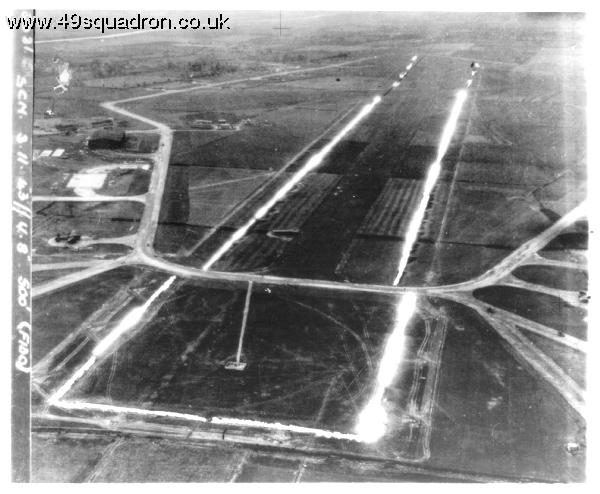 Fiskerton
Fiskerton
Validation date: 27 12 2015
Updated on: Never
Views: 7937
See on the interactive map:
53°14'34"N 000°25'58"W
Runway: 05/23 ...x..m - concrete
Runway: 08/26 ...x..m - concrete
Runway: 13/31 ...x..m - concrete
Fiskerton Air field (RAF Fiskerton) was an airfield 195 kilometer north of London.
Construction started in 1942 and the airfield opened in January 1943 as a satellite to RAF Scampton under Group 5 Bomber Command. It featured three runways, 36 aircraft parkings, A B1 and a T2 hangar and several dispersed sites, comprising accommodation for aircrews, sick bay, mortuary, gymnasium, chapel and sewage treatment works were located to the east and south of the airfield with bomb storage area located to the north. One aircraft parking on the north side of the airfield was later 'traded' for a second T2 hangar.
49 Sqn was based at the airfield from the start, with the exception for a few weeks in the autumn of 1943, when repairs were carried out on the runway. Operation 'Hydra', the Peenemunde Raid, was launched from Fiskerton on 17 Aug 1943. During the runway repairs, carried out between 22 September and 23 October 1944, the opportunity was taken to install the FIDO fog dispersing equipment system. FIDO consisted of two rows of burning petrol on each side of the runway. The heat generated by the system was enough to rise the temperature above the runway, cutting a hole in the fog. It provided aircrews, often in battle damaged bombers, with a brightly lit strip indicating the position of the runway. RAF Fiskerton was one of only 15 airfields to be equipped with FIDO. 
FIDO during a demonstration on 3 Nov 1943, from 500ft looking in a south westerly direction, showing clearly the main runway threshold. To the left of the shot, above the Lancaster on its dispersal, the concrete base for the not yet erected B1 hanger can be seen. The T2 hanger is clearly visible and to it’s right the watch office complex is located. Moving further up the photo on the left, the A Flight dispersal can just be seen. (49squadron.co.uk)
The same test, seen from the south. Caption says RAF Fiskerton - 3rd Nov. 1943 - testing 'FIDO'. (fiskertonairfield)
Explanation video of the FIDO system.
Leading Aircraftwoman Lilian Yule tractors Avro Lancaster B Mark III, DV238 'EA-O', of No. 49 Squadron RAF to its dispersal slot at Fiskerton, Lincolnshire. DV238 later went to 44 Squadron RAF with whom it was lost during a raid on Berlin on 16/17 December 1944 (© IWM (CH 13716))
In October 1944, 49 Sqn was replaced by 576 Sqn. They used the airfield until the end of the war, their last combat sortie from the airfield was in participation of the attack on Hitler's Eagle's Nest at Berchtesgaden in Bavaria.



